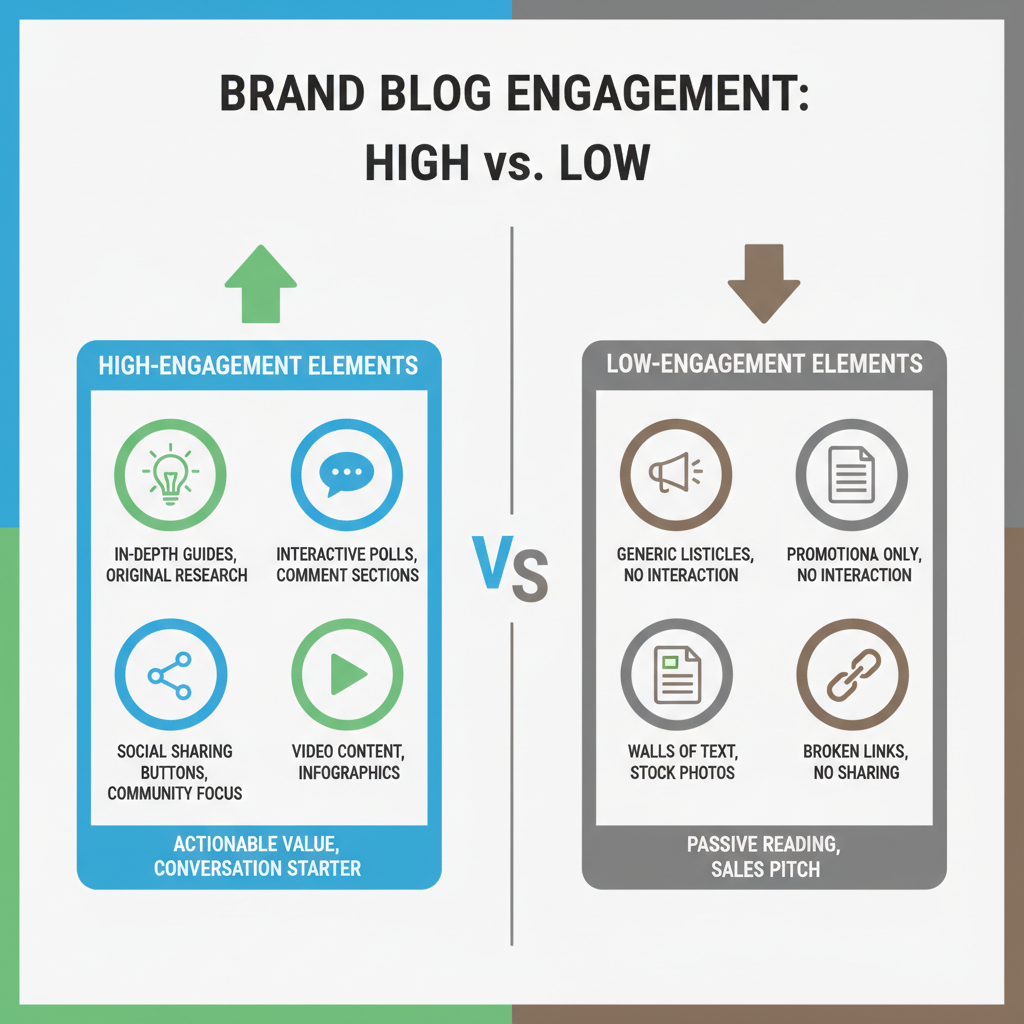Creating Brand Blogs That Boost Engagement and Loyalty
Learn how to craft brand blogs that boost engagement and loyalty using consistent voice, storytelling, SEO, visuals, and strategic content planning.

Creating Brand Blogs That Boost Engagement and Loyalty
In the competitive, digital-first landscape, brand blogs have become more than just online articles—they are strategic assets for storytelling, audience engagement, and loyalty building. A successful brand blog communicates values, strengthens trust, and positions you as an authority in your niche. This comprehensive guide will show you how to plan, create, optimize, and maintain high-impact brand blogs that resonate with your audience and drive meaningful results.

---
Define Your Brand’s Voice and Target Audience
Before writing, clearly define your brand's voice. This voice should represent your mission, values, and culture—whether professional, friendly, witty, or authoritative—and remain consistent across posts. A distinctive voice creates a recognizable personality your audience can connect to.
Steps to define your voice:
- Identify core values (e.g., innovation, sustainability, humor).
- Determine tone (e.g., casual, formal, conversational).
- Craft a style guide with grammar, terminology, and formatting rules.
Equally important is speaking directly to a specific audience profile. Use demographic data, lifestyle indicators, pain points, and aspirations to create detailed buyer personas that help ensure content relevance.
---
Research and Choose Blog Topics Aligned with Brand Values
Topic selection should go beyond chasing trends. Prioritize subjects that align with brand values and meet audience interests, reinforcing credibility and trust.
Ideas for alignment:
- Eco-friendly brand: sustainability tips, green industry news, product transparency.
- Tech brand: emerging trends, how-to guides, case studies.
Leverage keyword research tools to validate popularity and ensure search potential while staying true to your brand identity.
---
Create a Consistent Content Calendar for Publishing
Consistency solidifies trust and builds anticipation. An erratic schedule can erode engagement. Develop a monthly or quarterly content calendar mapping topics, authors, deadlines, and publication dates.

Benefits of a content calendar:
- Keeps teams organized.
- Balances evergreen and timely topics.
- Enhances collaboration among writers, designers, and marketers.
Use spreadsheets or project management tools like Trello, Asana, or Notion for better tracking and transparency.
---
Use Storytelling to Connect Brand Message with Audience Needs
Storytelling transforms content into memorable, relatable experiences. Humanizing your brand through narrative increases emotional connection.
Storytelling tips:
- Highlight customer success stories showing product impact.
- Share behind-the-scenes processes or team profiles.
- Craft a hero’s journey that reflects your brand’s growth and challenges.
Always link stories to audience needs and aspirations, positioning your brand as empathetic and solution-focused.
---
Incorporate SEO Best Practices
Strong SEO ensures your brand blogs reach wider audiences and attract organic traffic.
Key SEO tactics:
- Use the main keyword ("brand blogs") naturally in headings, subheadings, and body text.
- Create descriptive meta titles and meta descriptions.
- Structure posts with clear headers (`##` / `###`) and short paragraphs.
- Add relevant alt text to images.
Example meta description code:
---
Enhance Content with High-Quality Visuals
Visuals should reflect your brand’s tone and identity while clarifying complex information.
Visual guidelines:
- Adhere to brand color palettes.
- Use professional-quality images, diagrams, and infographics.
- Simplify data with visual aids.

Custom visuals improve recognition and encourage sharing.
---
Include Clear Calls-to-Action in Every Post
CTAs guide readers toward the desired next step, whether subscribing, downloading a resource, or purchasing.
Best practices for CTAs:
- Use action-driven language ("Download Your Guide", "Start Your Free Trial").
- Make CTAs visually prominent with buttons or graphics.
- Ensure CTA relevance to the post topic.
---
Promote Blogs Through Social Media and Email Campaigns
Publishing is only part of the process—promotion guarantees visibility.
Promotion channels:
- Share snippets on LinkedIn, Twitter/X, Instagram.
- Contribute posts to niche communities.
- Feature blog links in email newsletters with compelling subject lines.
Combine organic tactics with paid promotion for broader reach.
---
Measure Blog Performance with Analytics
Analytics tools reveal if your content meets objectives and where improvement is needed.
| Metric | Purpose | Tools |
|---|---|---|
| Page Views | Gauge audience interest | Google Analytics |
| Average Time on Page | Measure engagement duration | Google Analytics |
| Conversion Rate | Track effectiveness of CTAs | Google Analytics, CRM Reports |
| Bounce Rate | Evaluate content relevance & quality | Google Analytics |
Regular performance reviews allow you to fine-tune topics, style, and promotion.
---
Update and Repurpose Older Content
Keeping content fresh sustains SEO value and audience trust. Audit older posts and refresh data, add insights, and adjust keywords.
Ways to repurpose:
- Convert posts into infographics or short-form videos.
- Bundle related articles into a downloadable eBook.
- Create social media carousels from key points.
Repurposing extends the content’s lifespan and exposes it to new audiences.
---
Summary & Next Steps
Creating effective brand blogs blends strategic planning with creative execution. Define your voice, align topics with values, maintain publishing consistency, tell compelling stories, optimize for SEO, use visuals strategically, and actively promote content. Measure results regularly, and refresh old posts to maintain relevance.
By applying these steps systematically, you can transform your brand blog into a trusted resource that boosts engagement and fosters loyalty. Start refining your brand blog strategy today to connect deeply with your audience and achieve sustained growth.




